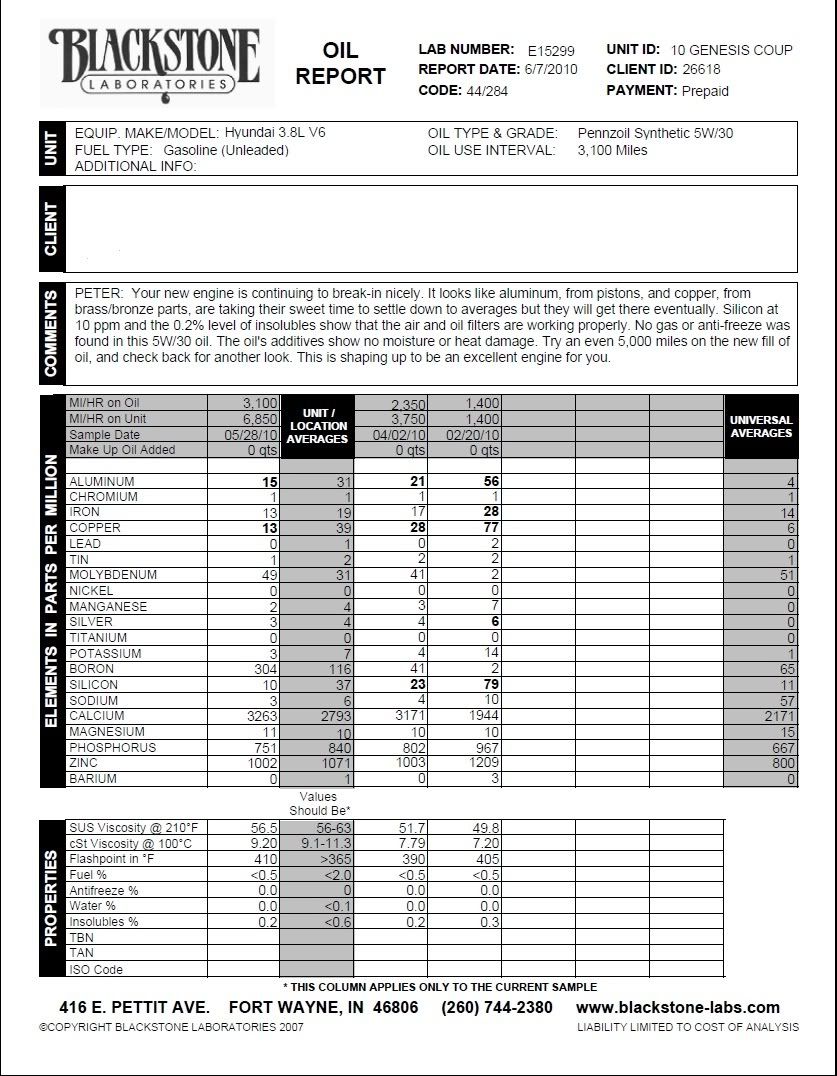Hey guys,
I just got my 3rd UOA in on the new ride and it seems to be trending down in the wear metals nicely. I think I'm going to stick with the PU 5W-30 over the PP 5W-20, and settle in to 4k - 5k OCI's.
Couple quick questions though. I'm still seeing silver, and I've never seen that in UOA's before this car. Where is that coming from? Also, I see Boron jumped up quite a bit from the factory fill and PP 5W-20...is that just an additive difference in the PU?


I just got my 3rd UOA in on the new ride and it seems to be trending down in the wear metals nicely. I think I'm going to stick with the PU 5W-30 over the PP 5W-20, and settle in to 4k - 5k OCI's.
Couple quick questions though. I'm still seeing silver, and I've never seen that in UOA's before this car. Where is that coming from? Also, I see Boron jumped up quite a bit from the factory fill and PP 5W-20...is that just an additive difference in the PU?


